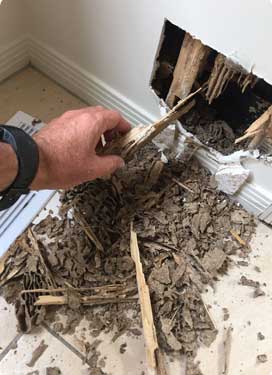It doesn’t sound particularly important, but knowing the signs of termite activity is a must for every homeowner!
The threat of termites is (or should be) a key concern for all homeowners. Termite damage is not covered by typical home insurance, yet termite attack is more likely than house fire, flood and other natural combined. As such, it’s important to take measures to protect your home from termite attack. Professional annual termite inspections are recommended by all governments and building authorities (and us at Termites VIC!) as a minimum requirement, but since a termite attack can occur at any time, it pays for homeowners to know the obvious signs of termite activity.
Termite mudding
Termite mudding is the most common sign of termite activity that can be spotted by homeowners. The main pest termites are subterranean termites, which means they live underground. Termites build their mud tubes when they need to move above ground, and they provide the termites with protection against predators and helps prevent them from drying out.
Termite mud tube can be seen on trees, fencing and underneath houses – anywhere when the termites need to move from the ground to a food source. When they are feeding within a food source, you can sometimes see mudding filling gaps in any exposed areas.
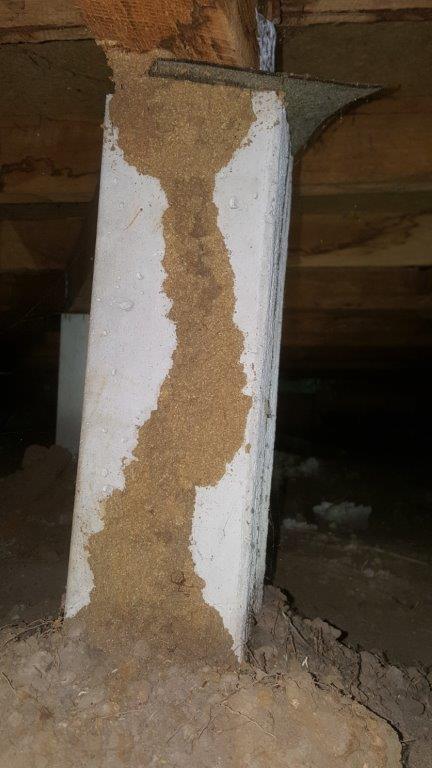
Worker termites
It’s not actually that common to see live termites, as they tend to remain well hidden underground. They are more likely to be seen when digging around in the garden of if you break open a food sources where they are active. However, you should know what termites look like if you do spot them around the yard, or worse still in the house.
Termites are also called “white ants” – they do superficially look like pale coloured ants. But actually, on close inspection they look quite different.
Termites:
- Pale coloured
- No eyes (worker termites are blind)
- Antennae straight
- No “waist”
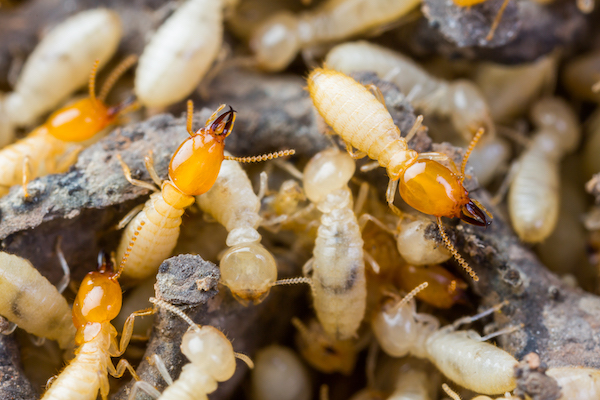
Ants:
- Coloured (brown and black colours)
- Obvious eyes
- Antennae with obvious bend / “elbow”
- Three clear body segments with obvious waist
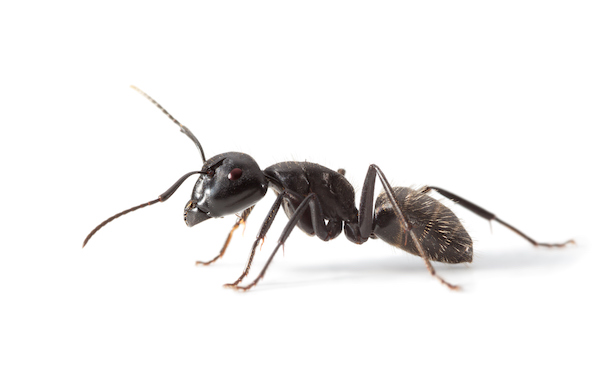
(Actually, termites are more closely related to cockroaches rather than ants!)
Flying termites / termite wings
Flying termites are the new king and queen termites that get released in great numbers from mature termite nests at certain times of the year – this is the termite mating flight. Typically, these occur on warm, humid nights in spring and summer.
These flying termites (alates) are attracted to lights and so can congregated in large numbers outside buildings. When they land to pair off, they quickly shed their wings, before moving off to find a new place to start a nest. If you see piles or wings on the ground outside (or worse, inside!) it means there is a termite nest nearby, possibly in your house, so you should get a professional termite inspection immediately.
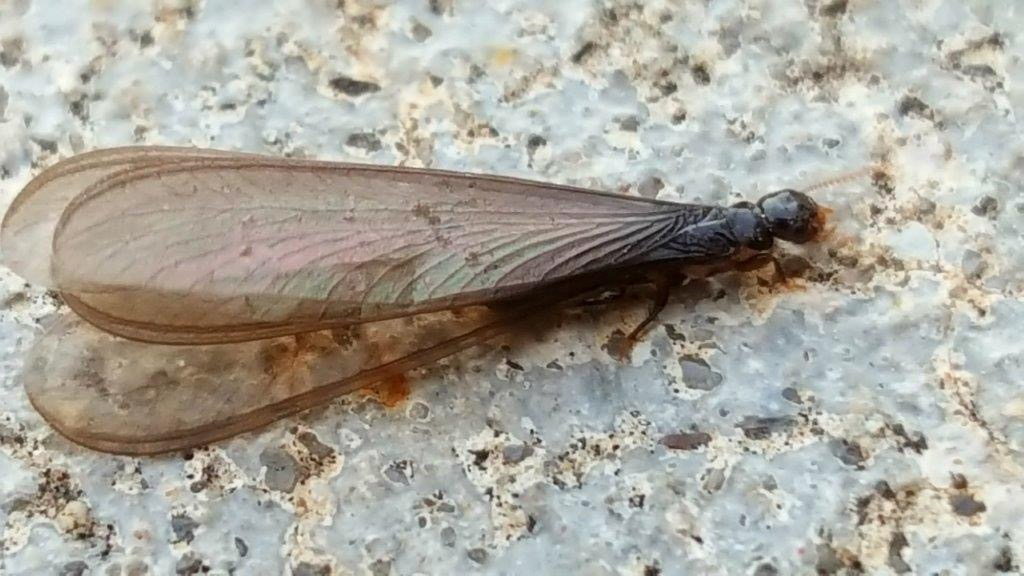
Termite damage
Spotting termite damage isn’t always easy to spot. Often, homeowners will only be aware of an issue when wood crumbles of collapses. Obviously at this stage, the termite attack is well underway. However, there can be more subtle signs of potential termite damage which may warranty calling a termite inspector to investigate. Floorboard which may be a bit spongy or bouncing may be indicate of termite activity underneath, as will doors or windows which no longer close properly.
Certainly, keeping an eye out for termite activity in the yard is something every homeowner can do. If you can, it is always a good idea to have a look in the roof void or sub-floor every now and then to have a look for the signs of termite. However, if you do spot something suspicious it’s important not to touch or disturb the potential activity (no matter how tempting in may be!)… and certainly, don’t spray the area with insecticide. Such activities will temporarily disturb the termites and make it more difficult for a termite professional to work out what is going on and put together a termite treatment plan.
Knowing the signs of termites doesn’t replace the need for a professional annual termite inspection as a termite inspector will be able to spot the subtle signs of termite activity (through their skill and specialised equipment) and importantly, also determine any conditions or issues around the home (such as water leaks) that may make a termite attack more likely.
So, if you think you may have termites, give the experts a Termites VIC a call immediately to book your termite inspection.

